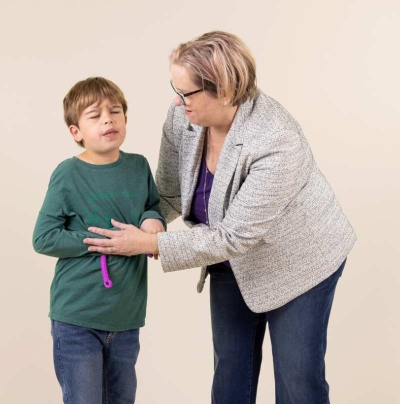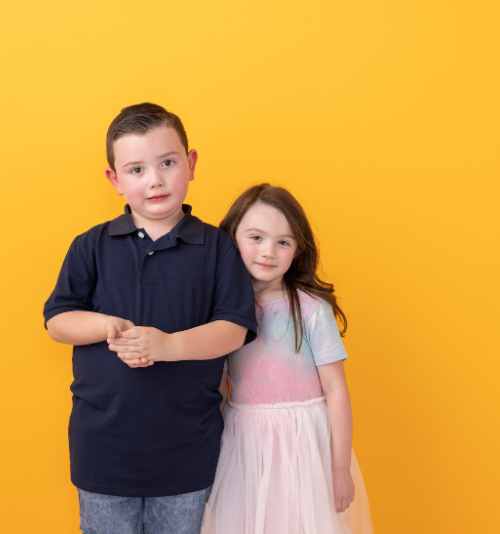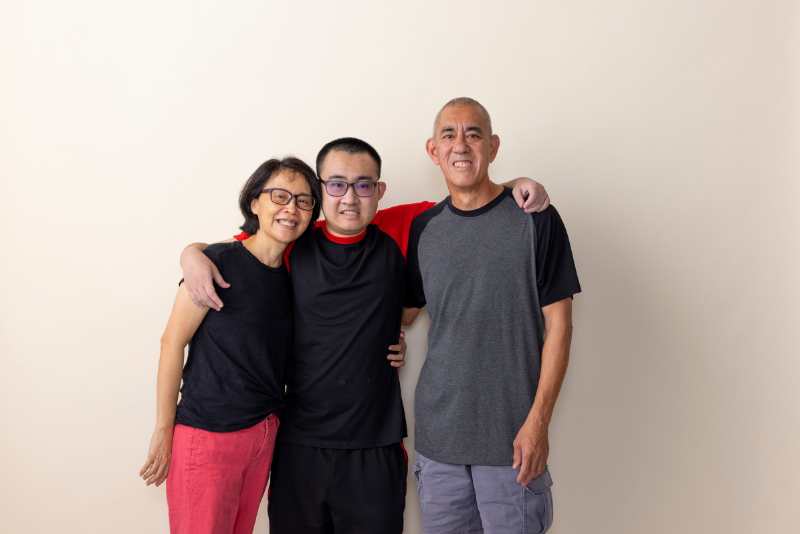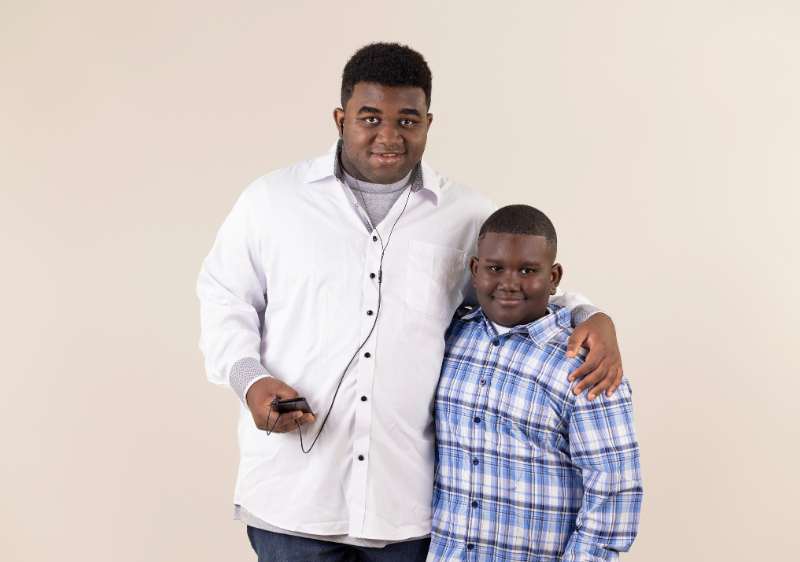
Understanding Autism
The Autism Experience
What Is Autism Spectrum Disorder?
Autism Spectrum Disorder (ASD), hereafter referred to as Autism (which includes Asperger’s Disorder and Pervasive Developmental Disorder – Not Otherwise Specified [PDD-NOS]), is a complex, lifelong developmental disability caused by differences in the brain.
Autism can impact a person’s:
- social skills
- communication
- relationships
- self-regulation
The Autism experience is different for everyone. It is defined by a certain set of behaviors and is often referred to as a “spectrum disorder” that affects people differently and to varying degrees.
While there is currently no known single cause of Autism, early diagnosis helps a person receive resources that can support the choices and opportunities needed to live fully.
Signs & Characteristics
Autism impacts an individual throughout the lifespan. However, research shows that early diagnosis can lead to improved quality of life. The behaviors of Autism may be apparent in infancy, but they usually become clearer during early childhood. As part of a regular health visit, your child’s doctor should perform developmental screenings focused on Autism. This screening is recommended at ages 18 and 24 months for all children.
Your doctor will encourage you to ask specific questions about your child’s developmental progress. The Centers for Disease Control and Prevention (CDC) Milestones Checklist can be used as a guide to track your child’s development from 2 months to 5 years.

Social communication and interaction skills can be challenging for people with ASD. Characteristics can include:
- Avoids or does not keep eye contact
- Does not respond to name by 9 months of age
- Does not show facial expressions such as happy, sad, angry, and surprised by 9 months of age
- Does not play simple interactive games like pat-a-cake by 12 months of age
- Uses few or no gestures by 12 months of age (for example, does not wave goodbye)
- Does not share interests with others by 15 months of age (for example, shows you an object that they like)
- Does not point to show you something interesting by 18 months of age
- Does not notice when others are hurt or upset by 24 months (2 years) of age
- Does not notice other children and join them in play by 36 months (3 years) of age
- Does not pretend to be something else, like a teacher or superhero, during play by 48 months (4 years) of age
- Does not sing, dance, or act for you by 60 months (5 years) of age
Contact your child’s doctor if you have any concerns about your child’s development.

People with ASD have behaviors or interests that can seem unusual. These behaviors or interests set ASD apart from conditions defined by problems with social communication and interaction only.
Examples of restricted or repetitive behaviors and interests related to ASD can include:
- Lines up toys or other objects and gets upset when order is changed
- Repeats words or phrases over and over (called echolalia)
- Plays with toys the same way every time
- Is focused on parts of objects (for example, wheels)
- Gets upset by minor changes
- Has obsessive interests
- Must follow certain routines
- Flaps hands, rocks body, or spins self in circles
- Has unusual reactions to the way things sound, smell, taste, look, or feel
Contact your child’s doctor if you have any concerns about your child’s development.
 Most people with ASD have other related characteristics. These might include:
Most people with ASD have other related characteristics. These might include:
- Delayed language skills
- Delayed movement skills
- Delayed cognitive or learning skills
- Hyperactive, impulsive, and/or inattentive behavior
- Epilepsy or seizure disorder
- Unusual eating and sleeping habits
- Gastrointestinal issues (for example, constipation)
- Unusual mood or emotional reactions
- Anxiety, stress, or excessive worry
- Lack of fear or more fear than expected
It is important to note that children with ASD may not have all or any of the behaviors listed as examples here. Contact your child’s doctor if you have any concerns about your child’s development.
Prevalence
Autism is prevalent across the world, although tracking rates can vary due to differences in reporting. In 2023, the Centers for Disease Control and Prevention (CDC) updated the Prevalence Data & Statistics for Autism.
The report concluded:
- The prevalence of Autism had risen to 1 in every 31 – more than three times as great as the 2004 rate of 1 in 125.
- Children who receive an Autism diagnosis by age 4, are fifty times more likely to receive services.
- More White and Black children were identified with Autism than Hispanic children.
- Stigma, lack of access to healthcare services due to non-citizenship or low income, and non-English primary language are potential barriers to the early identification of Hispanic children and children of color with Autism.
- Boys are approximately 4 times more likely to have an Autism diagnosis than girls of the same age. However, recent research suggests that girls may not display characteristics of Autism in the same way as boys and might go undiagnosed because of their different presentation.
Screening
Autism is characterized in the American Psychiatric Association’s Diagnostic and Statistical Manual (DSM-5), which is used by clinicians to diagnose Autism.
Some examples can include:
- Persistent differences in communication, interpersonal relationships, and social interaction across different environments.
- What this can look like: Being nonverbal, nonspeaking, or having atypical speech patterns, having trouble understanding nonverbal communication, difficulty making and keeping friends, difficulty maintaining typical back-and-forth conversational style.
- Restricted and repetitive behavior, patterns, activities and interests.
- What this can look like: Repeating sounds or phrases (echolalia), repetitive movements, preference for sameness and difficulty with transition or routine, rigid or highly restricted and intense interests, extreme sensitivity to, or significantly lower sensitivity to, sensory stimuli.

Causes & Factors
There is no known single cause for Autism, but it is generally accepted that it is caused by differences in brain structure or function. Brain scans show differences in the shape and structure of the brain in people with Autism compared to in neurotypical development. Researchers do not know the exact cause of Autism but are investigating a number of theories, including the links among heredity, genetics, and medical problems. There has been misinformation about the cause of Autism. It is not caused by vaccines or due to parenting style or nutrition.
In many families, there appears to be a pattern of Autism or related disabilities, further supporting the theory that the disorder has a genetic basis.
While no one gene has been identified as causing Autism, researchers are searching for irregular segments of genetic code that people with Autism may have inherited. It also appears that some people are born with a susceptibility to Autism, but researchers have not yet identified a single “trigger” that causes Autism to develop.
Other researchers are investigating the possibility that under certain conditions, a cluster of unstable genes may affect brain development in an unexpected way, resulting in Autism. Still other researchers are investigating complications during pregnancy or delivery as well as environmental factors such as viral infections, metabolic imbalances, and exposure to chemicals.
Genetic Vulnerability
Autism tends to occur more frequently than expected among individuals who have certain medical conditions, including fragile X syndrome (FXS), tuberous sclerosis, congenital rubella syndrome (CRS), and untreated phenylketonuria (PKU). Some harmful substances ingested during pregnancy also have been associated with an increased likelihood of Autism.


Autism is a lifelong disorder
From the time a child is diagnosed, supports are needed to help each individual with Autism achieve their potential. The spectrum of Autism also means that the spectrum of life is available to individuals with an ASD diagnosis. From school-age interventions, to transition from adolescence into adulthood, people with Autism have doors open to them such as college, employment, and independent living. For those who have different skill sets, they also contribute greatly to society with their ASD abilities, which can be unique from their “typical” peers.
